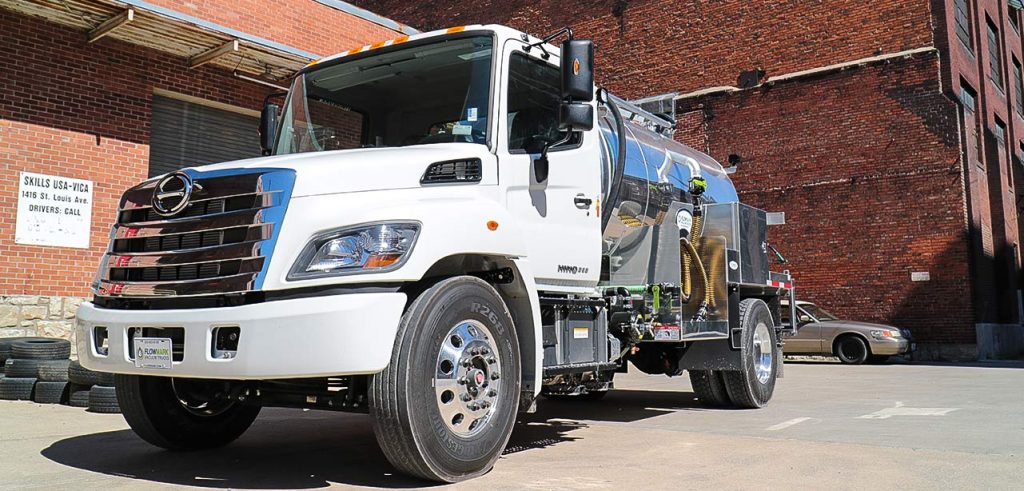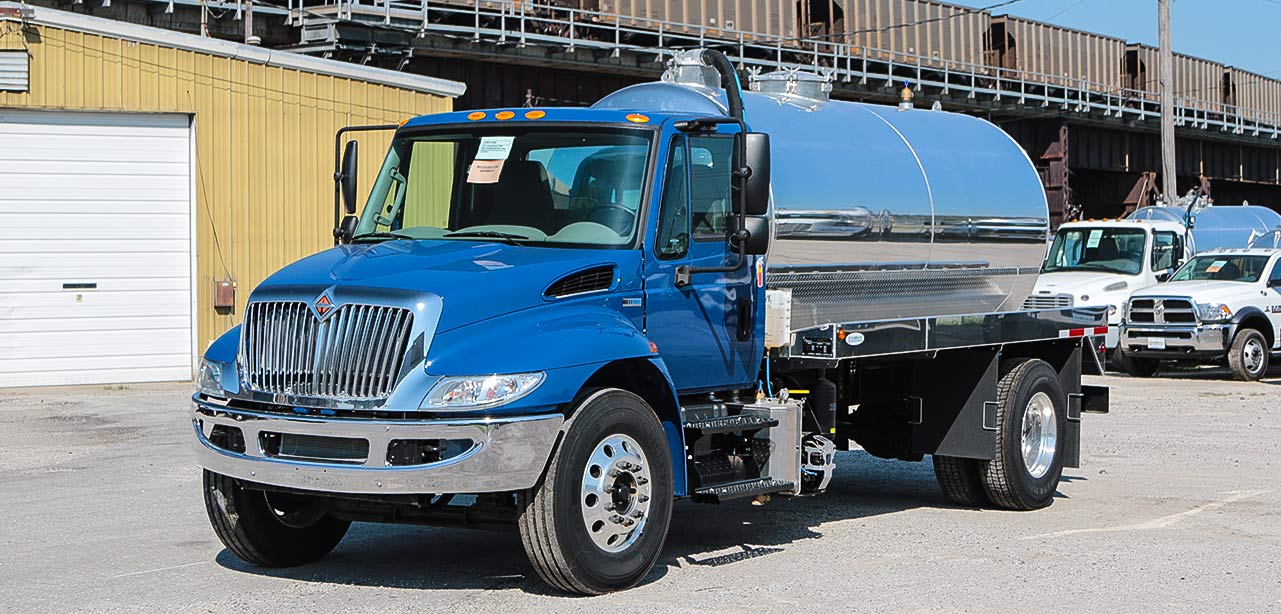Vac Trucks Require ‘Constant Vigilance’
Vacuum trucks are tank trucks equipped with a high-powered vacuum pump that sucks up solids, fluids, sludge or slurry at high speed through a hose. In the oil patch, their central task is to clean up waste — contaminated soil and water, pipeline spills or the residue settled out at the bottom of a tank, which may include sand or paraffin wax — and transport it to a disposal site.
Another major use is hydro-vacuuming – the use of pressurized water to excavate and evacuate soil. In the oil industry, most vacuum trucks, called “combo vacs,” are equipped with hot water pressure washers that use steam to clean equipment, wash well heads, wash out tanks and clean up spills.
Others also have a scrubber mounted to the truck. The scrubber, a dry granular substance, reacts chemically with hydrogen sulphide (H2S) and “scrubs” the explosive gases out of a product.

FlowMark – Vacuum Truck
Maintaining a safe truck
Vacuum trucks require constant vigilance around maintenance to make sure truck equipment — valves, couplers, vacuum and conductive hoses and tank pressure and temperature gauges — are in proper working order.
A particular problem in a vacuum truck is parts overheating, according to Marvin Ferriss, manager at Three Star Trucking, a Canadian crude oil transport company. When you run a vacuum pump, the compression of air creates a great deal of heat. The operator must ensure there is continuous flow through the vacuum system to keep it cool.
Enjoying our insights?
Subscribe to our newsletter to keep up with the latest industry trends and developments.
Stay Informed“If the flow goes static, you can actually create enough heat to cause an explosion. You have to consider that all the time,” Ferriss said.
Operators must also watch and maintain two other systems. One is the emergency valves.
“You’re hauling dangerous goods. All the valves on the truck are self-closing, so if there’s an incident where you hit something or there’s a rollover, the valves all close by themselves. You have to maintain that system,” Ferriss said.
The other system to watch carefully is the positive air shutdown system, required by the gassy atmosphere as well as the diesel engine.
“Your atmosphere itself could become the fuel. And if the engine gets a big gulp of this gas, it can run away and explode. So you have to maintain that system. Test it regularly to ensure it works,” Ferriss said.
Trucks must also have proper TDG (transportation of dangerous goods) placards in place to disclose what they’re carrying.
By doing this, emergency personnel who have to respond know by the coding what is on board the truck and what precautions they need to take.
Vac trucks should be cleaned off regularly to get rid of oils, mud and paraffin wax that can impede the proper functioning of parts. The tank interior should be flushed out and kept clean of materials that could react with newly added waste liquids, maintenance experts said.
Prior to each job, operators should inspect the tank and pumping equipment to ensure they are in good condition.

Amthor Vacuum Truck – ASME DOT
Operators should be familiar with their trucks and how they operate and know the limitations: what they can pick up and safely handle and what could cause problems, technicians said. They should understand proper maintenance and inspection procedures as set out by the manufacturer. Knowing how to drive safely with hazardous products and knowing not to drive when fatigued or impaired is important, too.
Workers must be trained in proper evacuation and rescue procedures if there’s a toxic gas leak. In case workers are exposed to toxic gas, first aid should be available nearby.
Before, and sometimes during operations, there should be continuous monitoring of air quality at areas where there may be toxic gases or hydrocarbon vapors in the flammable range, such as the discharge area of the vacuum truck venting hose. It is also important to monitor tank temperature gauges (to identify chemical reactions) and tank pressure gauges to ensure correct pressure in receiving tanks and supply tanks. Tank level indicators should be monitored to avoid overfilling the tank.
One critical safe procedure that operators must follow is the requirement for proper disclosure. Sometimes, operators do not reveal the nature of the hazardous waste, safety experts said.
Supervisors must provide vac truck operators and their assistants (swampers) with the appropriate personal protective equipment (PPE) for the task, which may include hard hats, safety glasses, boots, impact gloves, hearing protection and fall protection. Appropriate PPE will depend on the safety data sheet (SDS) for the product being carried.
When using the hot water washer, workers need to guard against steam by wearing rain suits, rubber gloves, eye and hearing protection, face shields and rubber boots, Ferriss said.





















No mention of how the tank interior is cleaned once the tank is flushed out.